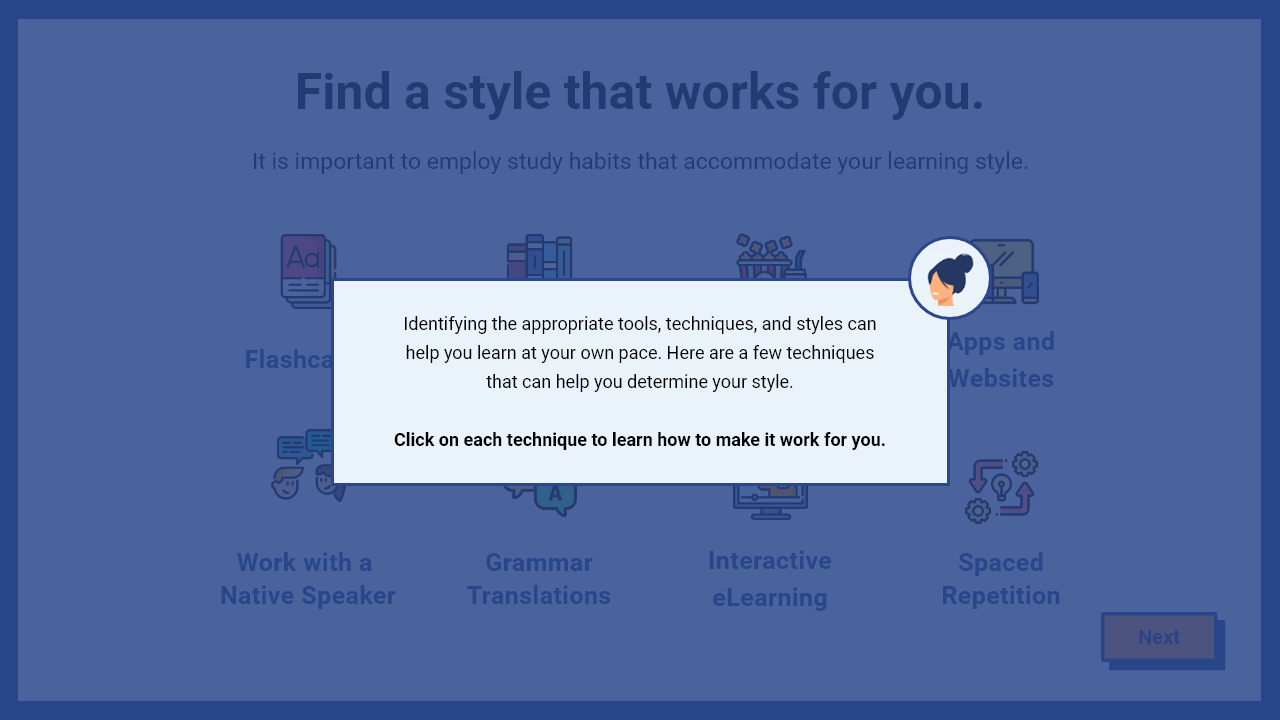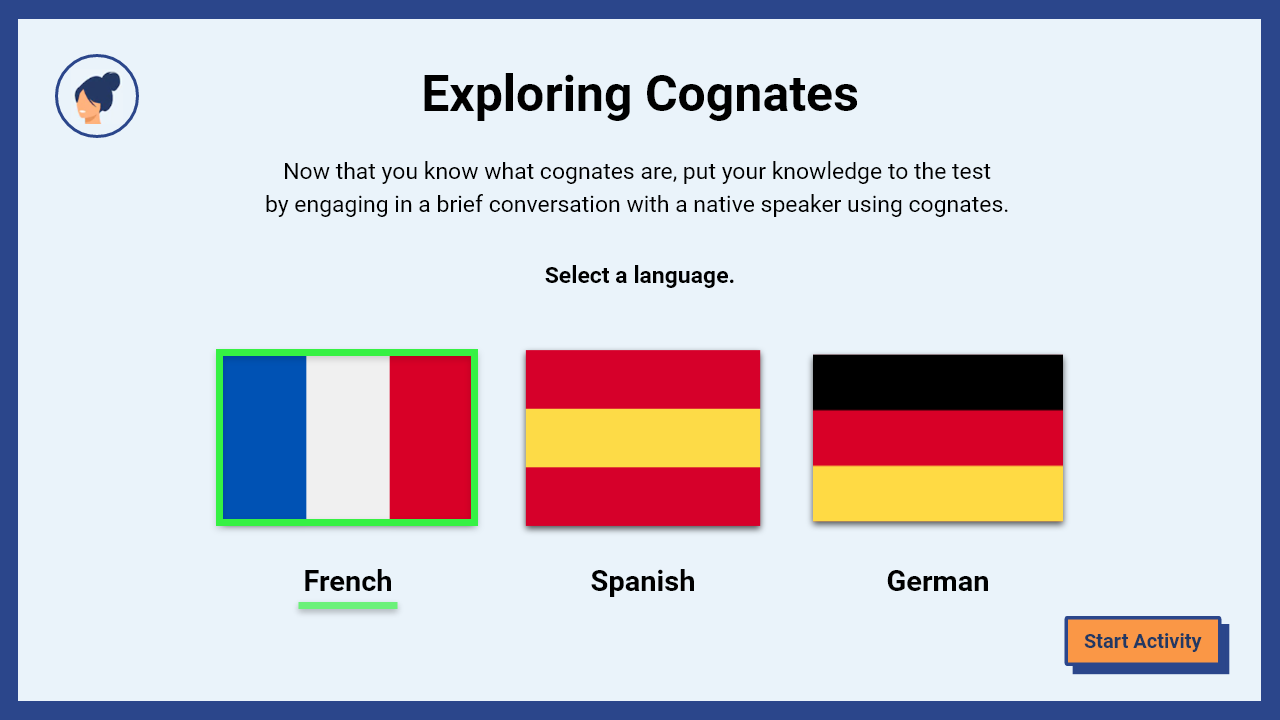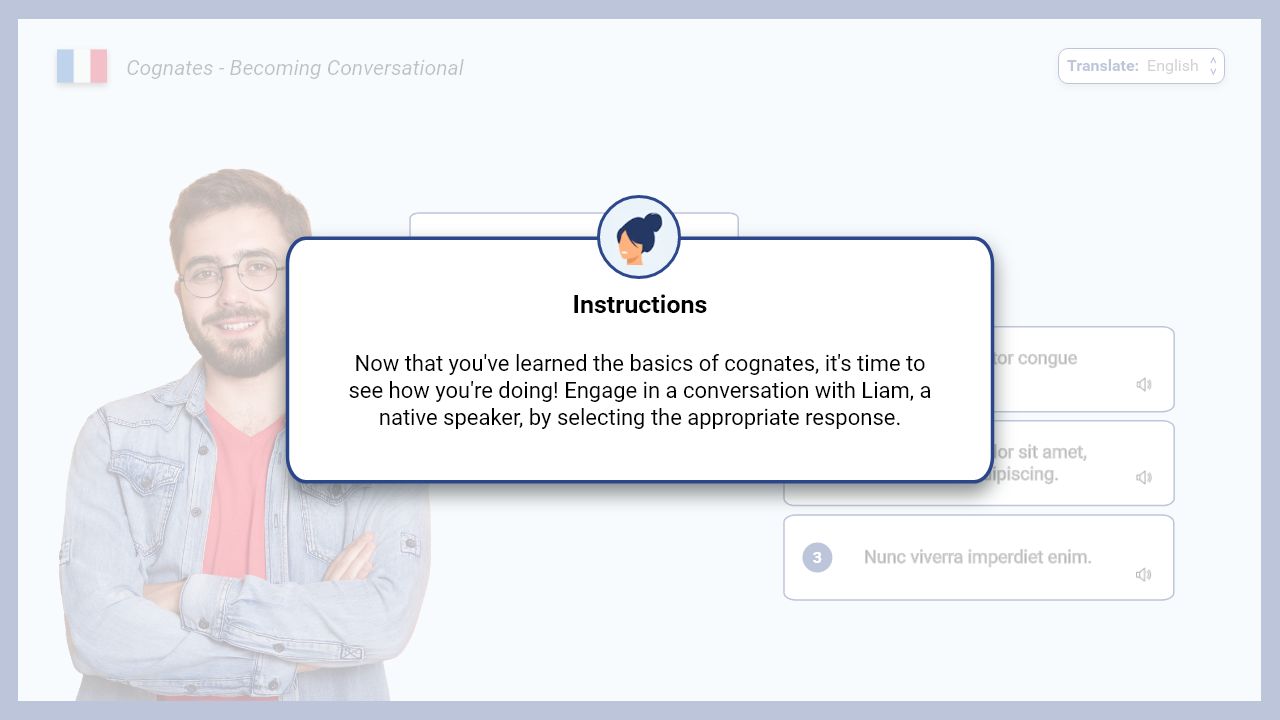How to Strategically Learn a Foreign Language
Overview
I designed this interactive eLearning course to support learners struggling to remain persistent with foreign language acquisition. This course provides learners with suggestions and advice on learning a foreign language strategically and persistently.
Responsibilities: Instructional Design, eLearning Development
Target Audience: People Looking to Learn a New Language
Tools Used: GitMind, Storyline 360
Budget: Low-Medium
Year: 2021
The Problem
I designed this course for a colleague looking to curb procrastination and sluggishness when it came to learning a foreign language.
The Solution
Since I found myself dealing with similar issues, my colleague and I worked together to identify our biggest problem areas and developed relevant goals. To produce a deliverable that met the needs we identified, I started designing a non-linear interactive eLearning course that highlighted the proven best practices discovered in my research efforts.
My Process
To bring this project to life I utilized a constructivist approach and applied ID methods to structure content. After identifying the need, producing valuable learning objectives, and completing my research, I created an action map that allowed me to visualize objectives, potential solutions, and action items that lead my decision-making.
Following the action map, I started developing a storyboard and rapid prototype in Storyline 360. Typically, I would split up these processes, however, I found it easier to develop this particular project by incorporating all my elements at once. I felt confident in doing so because this project was developed for a colleague who encouraged my creative autonomy and I knew exactly what I would’ve wanted in this course had it been designed for me.
Accommodation of various learning styles was a big consideration in designing this course because there are various ways to learn a foreign language effectively. Therefore, I did incorporate Universal Design for Learning (UDL) principles throughout. This course extends information to learners through more than one form of interaction and disregards any irrelevant obstacles in the learning process.
Instructional Design Strategy
To capture the learner’s attention and promote stimulus, I encouraged collaborative learning by providing a variety of interactivities throughout this course. Prior to instruction for each learning objective, learners are presented with their expected outcomes. Learners initially have the option to review their required performance or establish their own criteria for standard performance.
In alignment with my constructivist approach, I helped learners understand new information by relating it to something they already knew or have experienced. I did this by asking learners about previous experiences and concepts while having them incorporate prior learning into current activities. There is instructional support throughout this course in the form of mnemonics, concept mapping, role-playing, and case studies.
To reinforce new skills and knowledge and to confirm proper understanding of course concepts, learners apply what they’ve learned through scenario-based formative assessments. These assessments are presented in a way that allows learners to demonstrate their comprehension and application of course concepts through collaborative learning.
Results
This course has made it easier for my colleague to develop a structured plan and stay persistent in learning a foreign language. Although this project was initially requested for personal development, my colleague introduced this course to her mentees to encourage them to learn a foreign language. I received positive feedback from my colleague on the course’s ability to keep her persistent and engaged by simplifying processes and eliminating common, but unhelpful suggestions.







